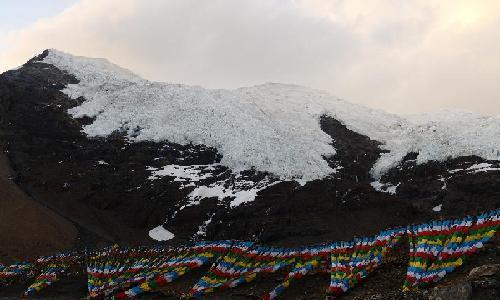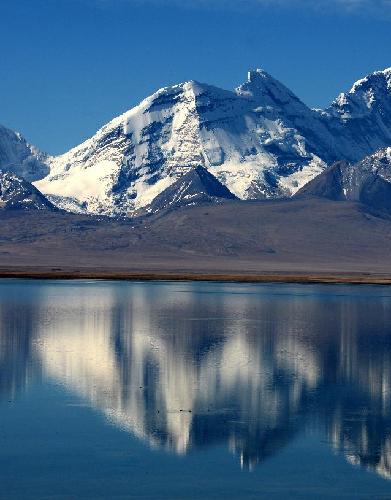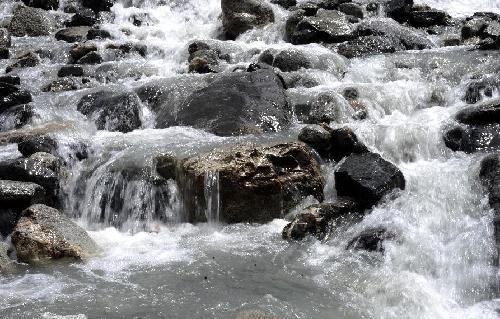Source:Xinhua 2015-01-31

Photo taken on April 20, 2014 shows the shrinking Karuola glacier, southwest China's Tibet Autonomous Region. According to the Institute of Tibetan Plateau Research of the Chinese Academy of Sciences (CAS), glaciers on the Qinghai-Tibet Plateau and surrounding areas have shrunk by 15 percent from 53,000 to 45,000 square kilometers over the past three decades. (Xinhua/Chogo)
Southwest China's Qinghai-Tibet Plateau, the major source of the country's largest rivers, has seen its glaciers shrink rapidly over the past 30 years, a national research institute revealed Wednesday.
According to the Institute of Tibetan Plateau Research of the Chinese Academy of Sciences (CAS), glaciers on the plateau and surrounding areas have shrunk by 15 percent from 53,000 to 45,000 square kilometers over the past three decades.
As the highest place in the world's mid-latitude regions, the plateau is more likely to be affected by global warming.

Photo taken on April 22, 2014 shows the Duoqing Lake at the foot of glacier-covered peaks in southwest China's Tibet Autonomous Region. According to the Institute of Tibetan Plateau Research of the Chinese Academy of Sciences (CAS), glaciers on the Qinghai-Tibet Plateau and surrounding areas have shrunk by 15 percent from 53,000 to 45,000 square kilometers over the past three decades. (Xinhua/Chogo)
Kang Shichang, a state laboratory director with the Cold and Arid Regions Environmental and Engineering Research Institute of CAS, said glaciers in the plateau have been shrinking since the 20th century and speeded up since the 1990s.
More and bigger cracks have appeared in ice at regions of an altitude above 6,300 meters in Mount Qomolangma, a sign of rapidly melting glaciers, he said.
China has more than 46,000 glaciers, mainly in the Qinghai-Tibet Plateau. They are a reliable indicator of climate change, and easy for scientists to observe.
Kang said retreating glaciers have impacted meltwater rivers and led to more glacier-lake outbursts.
"It can increase water flow of major rivers in the short term, but in the long run, a continuation of the retreat will eventually deplete the glacial ice and substantially reduce or eliminate runoff," he added.

Photo taken on June 2, 2012 shows meltwater running from a glacier in southwest China's Tibet Autonomous Region. According to the Institute of Tibetan Plateau Research of the Chinese Academy of Sciences (CAS), glaciers on the Qinghai-Tibet Plateau and surrounding areas have shrunk by 15 percent from 53,000 to 45,000 square kilometers over the past three decades. (Xinhua/Chogo)
Copyright © Xizang Daily & China Xizang News All rights reserved
Reproduction in whole or in part without permissions prohibited
Index Code: 藏 ICP 备 05000021 号
Producer: Xizang Daily International Communication Center